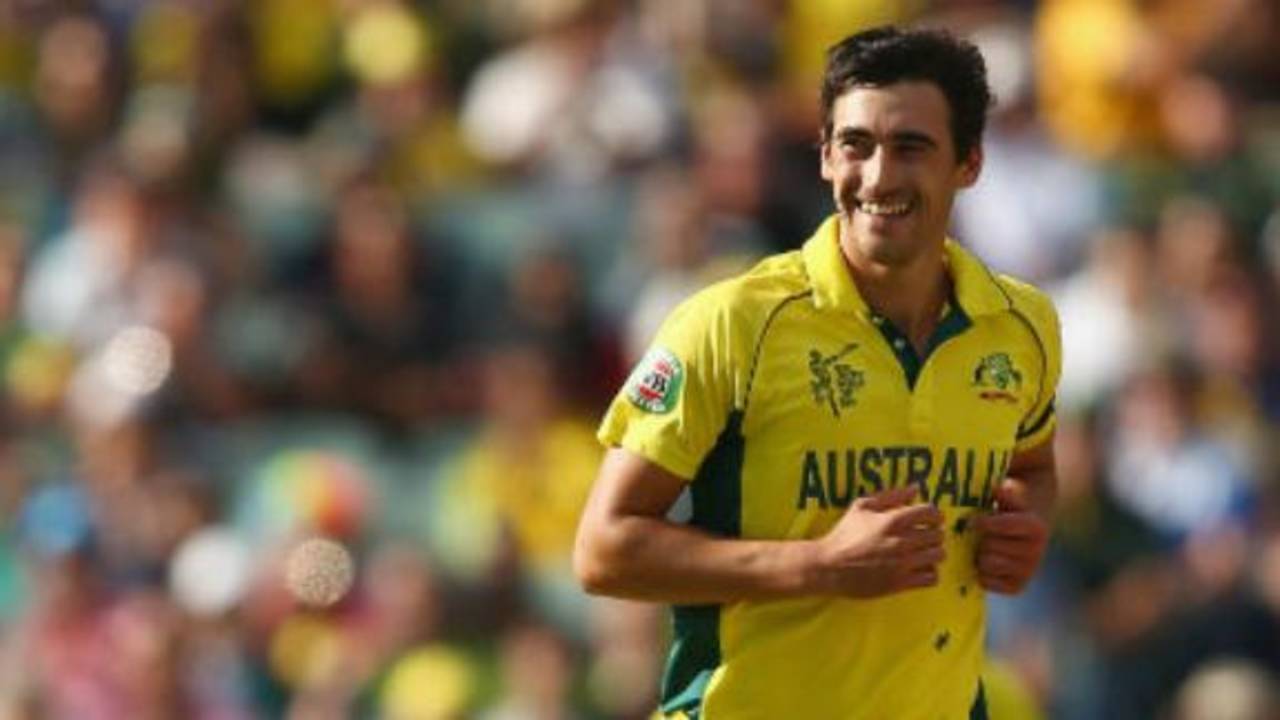So many writers in recent times have been offered unpaid work "offering great exposure" that a joke has emerged about said freelancers dying of said exposure. The line sprung to mind over the past three days in the first two matches for the Cricket Australia XI in the Matador Cup, beaten out of sight
by New South Wales on Monday then razed still more brutally
by Victoria on Wednesday - all in the name of "exposure at this level".
It had been the Bushrangers coach
David Saker who first raised public concerns about such beatings being detrimental to a collective of young talents unaccompanied by players of significant first-class experience. Saker's worries were brushed off by the national talent manager Greg Chappell, who predicted the tyros would be very competitive and "likely" to win a couple of games.
Chappell's long-time advocacy of youth, often to the expense of more seasoned players, was made manifest in the abortive Futures League experiment of five years ago. But even that competition afforded the young teams a sprinkling of experience to guide them. This time around the CA XI is bereft of even that kind of guidance, with only the opener Marcus Harris having played more than a handful of games for his state.
This is not to say that more senior pros are unavailable. The reshuffling of Cup squads due to the cancellation of the Bangladesh tour left the likes of Ben Rohrer and Jon Wells without their former places, while South Australia had left out
Mark Cosgrove from the team.
Cosgrove has just completed a successful northern summer with Leicestershire, where he has found not only run-making form but also personal discipline as a result of fatherhood and a senior role with the Foxes. Might it not have been useful to have him around to walk younger players through their first few overs against the likes of James Pattinson and Mitchell Starc, while also telling tales of his wayward, wasted younger days over dinner?
There is an Australian precedent for a team composed entirely of stripling talent embarrassing far more travelled opposition. In 1994 the Cricket Academy team shepherded by Rod Marsh beat Mike Atherton's England tourists twice in as many days at North Sydney Oval. At the time it was seen as proof of English cricket's poverty, but later years were to prove that Australia's talent stocks were at this point in unusually strong shape.
What is more usual is for young players to face plenty of hard knocks and second thoughts in competition against older men in club and state tournaments. The truly outstanding youngsters - think Ricky Ponting, Michael Clarke or Steven Smith here - will find their way through the system through a combination of advocacy and performance, but most others will take longer to find themselves.
Chappell has always been eager to fast-track this process in the belief it will uncover more great players than the traditional way, but evidence of this is scant. To reason that more young players will emerge as outstanding simply through opportunities freely given on the basis of age group is a calculation that lacks nuance for the way so much learning is done, not only in cricket but in life.
More prevalent is the kind of scenario glimpsed at Hurstville two days ago, on the same pitch the CA XI would be bowled out for 79 upon. Travis Head is a young identified talent as both batsman and leader, but he has learned to smooth the rough edges of his game by playing alongside older men, not just against them. Head's reflections on how the gap-finding, field-manipulating
Callum Ferguson had helped him add finesse to his favoured power game are worth taking note of.
For their part, the CA XI are adamant they don't need any extra help. Their leader
William Bosisto is a former Australia Under-19 captain and a polished speaker, something he showed when asked whether some more senior cricketers should be drafted in alongside him. "I've heard people say 'do you need an experienced player in your line-up'," he said.
"I guess that would be one approach but I think the whole idea of having the Cricket Australia XI in the tournament is to give 11 young guys exposure and see what it's like at this level and see what we have to improve to be competitive. From a personal perspective I know I've learned lots of the last two days about where I need to get to be able to dominate at this level and I think that's invaluable exposure.
"There's no point sitting around in the change room dwelling on today's performance or Monday's performance. We came up against two strong sides and we didn't perform anywhere near as we expected ourselves to or as we would have liked, but the chat was straightaway about moving forward and we play Tasmania on Saturday, so we're looking for ways we can get better and be competitive against Tasmania."
Cricket teams are generally chosen with their performance in mind. The CA XI has been picked for reasons of exposure instead, and it is now abundantly clear that this approach has created a crucible that only the most resilient young men will find a way to survive in. They are being offered no quarter by the opposition, and precious little advice on how to counter that. Some will work it out for themselves, some will not.
Whether they can improve enough over the next few weeks to close the vast margins of their first two games, as per Chappell's prediction, remains to be seen. But something else to ponder is how many of these young men will be chewed up and spat out of the game by the experience, then never seen in Australian colours again.
Daniel Brettig is an assistant editor at ESPNcricinfo. @danbrettig
